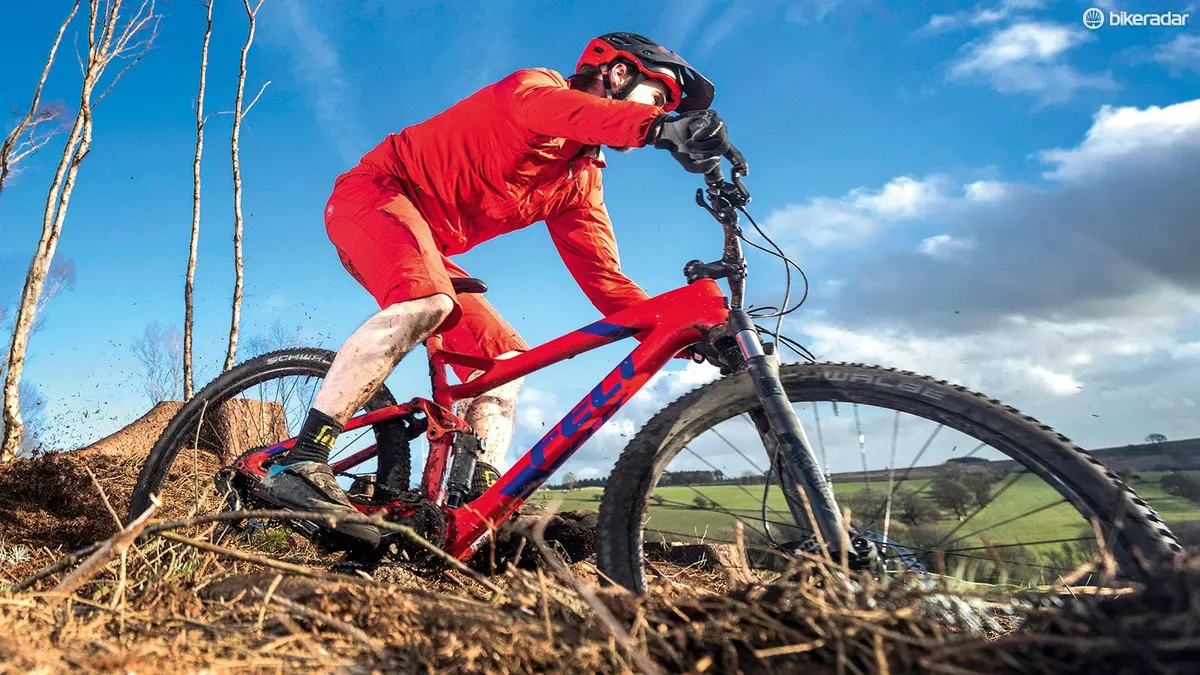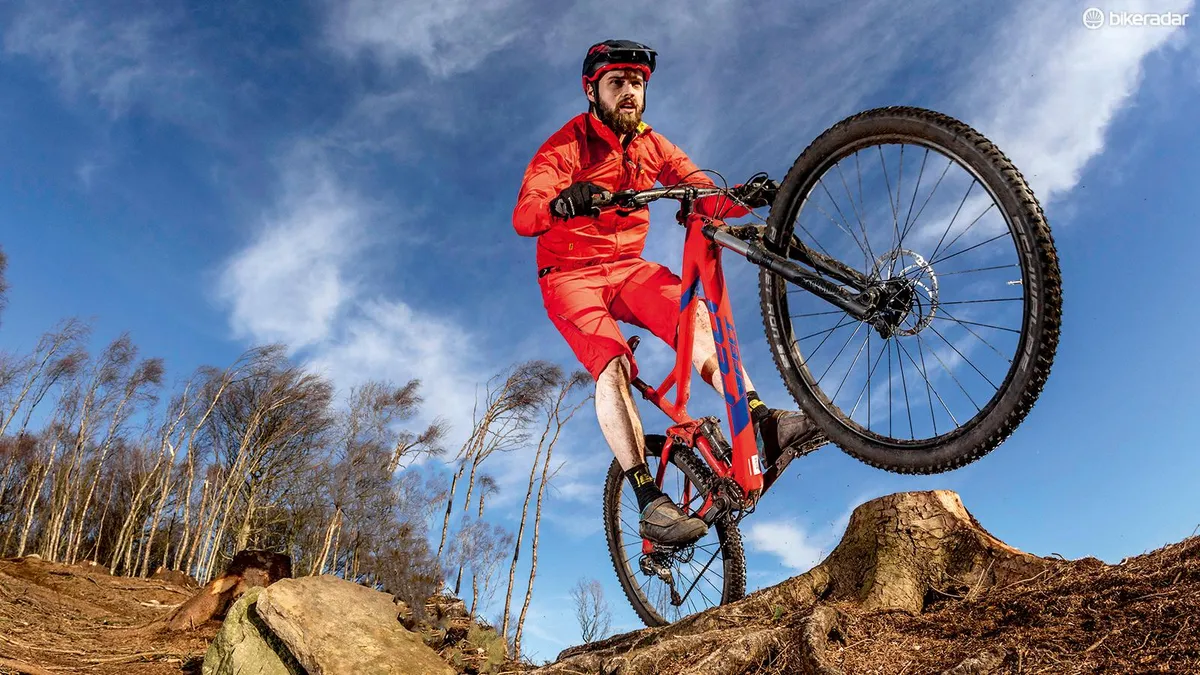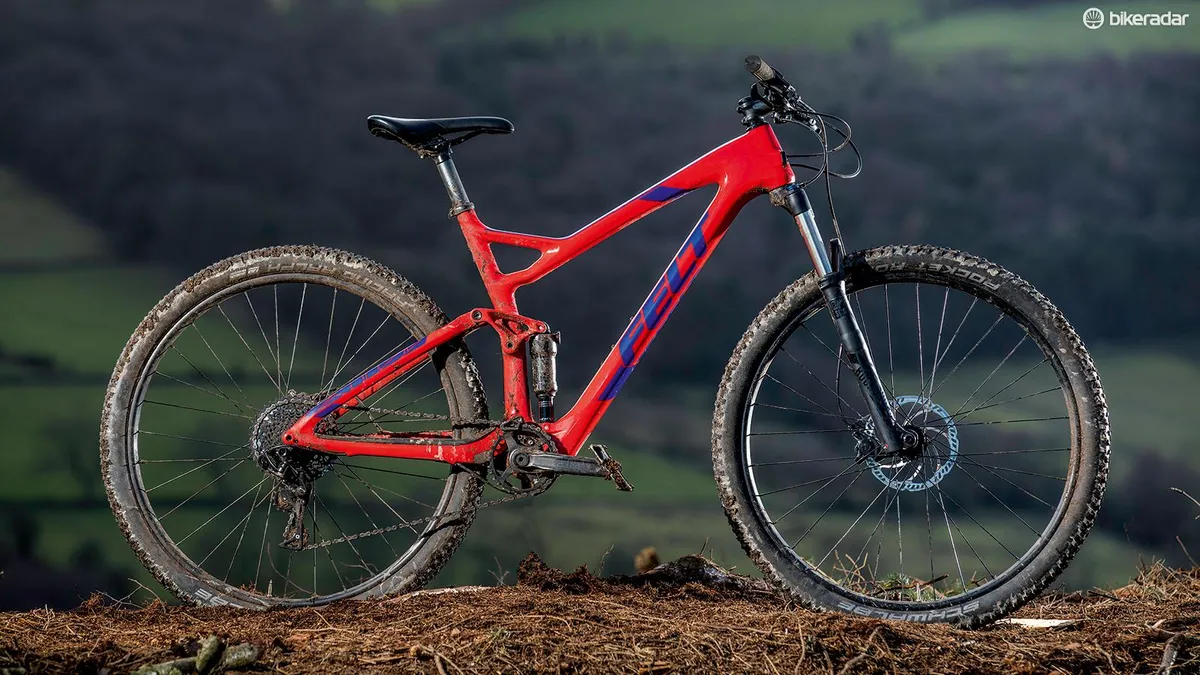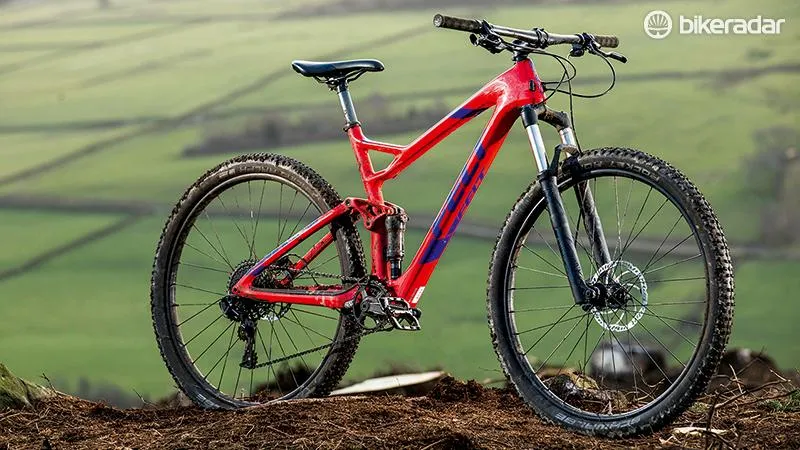Felt’s Edict has always been a rapid bike, but the new version is significantly lighter and stiffer, with sorted suspension and sweet handling, making this entry-level package an upgrader’s dream.
Felt Edict 5 frame
While it’s 200g heavier than the UHC Ultimate chassis of the flagship Edict FRD, at 2,125g (with shock) the UHC Advanced frame of the Edict 5 is still 250g lighter than that of the old FRD.
A 14mm shorter Boost rear end, wider main pivot and continuous fibre-alignment through the shock mount make it 20 percent stiffer through the rear axle, according to independent testing.
It’s 24 percent stiffer through the head tube too. Felt has specced a 120mm fork, which gives a 69-degree head angle, while a top tube that's 15mm longer than last year gives a reasonable reach.
There’s also some great practical detailing, including a screw-in bottom bracket, chain-protection plates and a small chain-guide as standard. The rub-free internal cable routing can handle a dropper post, shock remote cable and Di2 wiring.
Felt Edict 5 kit
A frame of this quality inevitably means kit compromises, but they aren’t obvious, except in terms of weight. The Race Face cranks get a direct-mount ring to save grams and the SRAM NX 1x11 drivetrain keeps shifting simple.

Felt’s Devox finishing kit does its job fine. The relatively wide wheels and mixed Schwalbe tyres add control at the expense of extra heft. RockShox’s Recon fork is also weighty, but its smoothness and control are acceptable. The distinctive-feeling Magura brakes will be replaced with basic (but bearable) Shimano M365s on production bikes, with a 180mm front rotor for increased power.
Felt Edict 5 ride
While some elements of the spec are ripe for upgrading, the Edict’s ride is remarkable for how sorted it is. The RockShox Deluxe R shock lacks any external adjustment apart from a rebound dial, but once I’d set the sag, I didn’t need to touch it again.
Supple stays (due to clever carbon lay-up) and shock-mount bearings (not bushings) let the extra negative spring volume of the DebonAir air-can suck the bike down onto the trail.
The short back-end minimises unsprung leverage and inertia, offsetting the weight of the NX cassette and helping the rear wheel track the ground seamlessly.
With no adjustable compression damping circuitry in the way, the shock has better oil flow for controlling bigger/harder impacts. The suspension ramps up from 60 percent into its stroke, so it never wallows or pedal strikes too much, despite its plush mid stroke.
While the Edict feels fluid and controlled in the rough, I never felt the need for a lockout lever to stop bounce.

Max-power sections show how impressively stiff the frame is. Not just through the deep belly and stout rear end, but right from the bar. You can wrench power through to the ground with arm-popping force, whether you’re exploding off the start line, sprinting for the finish or levering the Edict over a crux move on a tech climb.
That precision adds extra authority to the Felt’s precise, fast-reacting steering, too. The 720mm bar won’t get snagged in a crowded race pack but gives enough leverage to flick the 70mm stem round the back of trees or snatch back traction if you push the front tyre too hard.
You’ll have to be pushing pretty hard to unhook the Rocket Ron, though. The new Addix version of Schwalbe’s Performance compound seems a lot grippier and the 25mm rim width gives solid low-pressure support.
There’s enough volume in the tyre and rim to keep the fork feeling acceptably controlled until things get properly pointy and punchy, too. Out back, the Racing Ralph hooks up well considering how fast it rolls. The wheels are stiff too, which helps when dragging them up to speed.


